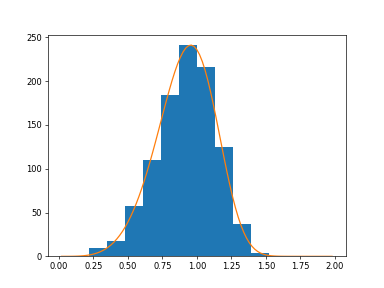nlcpy.random.RandomState.weibull
- RandomState.weibull(self, a, size=None)
Draws samples from a Weibull distribution.
Draws samples from a 1-parameter Weibull distribution with the given shape parameter a.
Here, U is drawn from the uniform distribution over
(0,1]. The more common 2-parameter Weibull, including a scale parameteris just
- Parameters
- afloat
Shape parameter of the distribution. Must be nonnegative.
- sizeint or tuple of ints, optional
Output shape. If the given shape is, e.g.,
(m, n, k), thenm * n * ksamples are drawn.
- Returns
- outndarray
Drawn samples from the parameterized Weibull distribution.
参考
RandomState.gumbelDraws samples from a Gumbel distribution.
注釈
The probability density for the Weibull distribution is
where
is the shape and
the scale.
The function has its peak (the mode) at
.
When
a = 1, the Weibull distribution reduces to the exponential distribution.制限事項
If a is neither a scalar nor None : NotImplementedError occurs.
Examples
Draw samples from the distribution:
>>> import nlcpy as vp >>> a = 5. # shape >>> s = vp.random.weibull(a, 1000)
Display the histogram of the samples, along with the probability density function:
>>> import matplotlib.pyplot as plt >>> x = vp.arange(1,100.)/50. >>> def weib(x,n,a): ... return (a / n) * (x / n)**(a - 1) * vp.exp(-(x / n)**a)
>>> count, bins, ignored = plt.hist(s.get()) >>> x = vp.arange(1,100.)/50. >>> scale = count.max()/weib(x, 1., 5.).max() >>> plt.plot(x, weib(x, 1., 5.)*scale) >>> plt.show()
